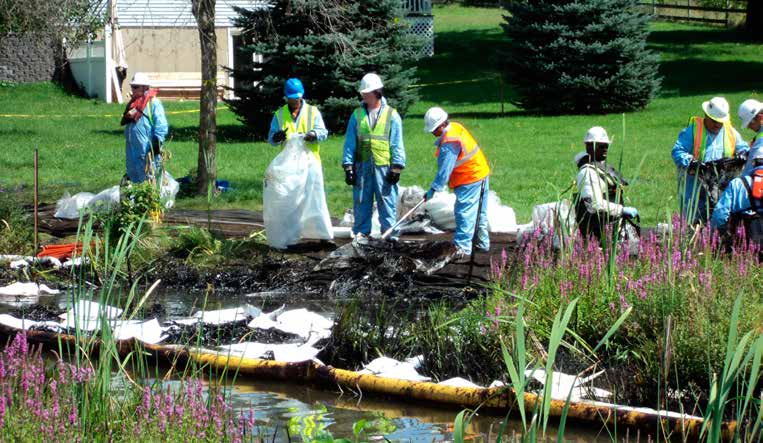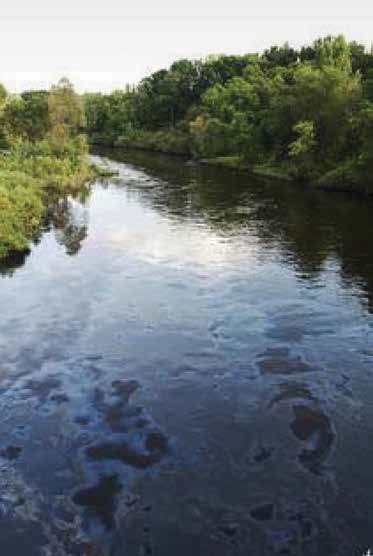Kalamazoo River Oil Spill
We are in the process of preparing additional content for this page. Thank you for your patience.
Enbridge Over trouble Water Report on Kalamazoo
The Kalamazoo River oil spill occurred in July 2010 when a pipeline operated by Enbridge (Line 6B) burst and flowed into Talmadge Creek, a tributary of the Kalamazoo River. A six-foot break in the pipeline resulted in the largest inland oil spill, and one of the costliest spills in U.S. history. The pipeline carries diluted bitumen (dilbit), a heavy crude oil from Canada's Athabasca oil sands to the United States. Following the spill, the volatile hydrocarbon diluents evaporated, leaving the heavier bitumen to sink in the water column. Thirty-five miles of the Kalamazoo River were closed for clean-up until June 2012, when portions of the river were re-opened. On March 14, 2013 the Environmental Protection Agency (EPA) ordered Enbridge to return to dredge portions of the river to remove submerged oil and oil-contaminated sediment. [Wikipedia]
Selected images of the Kalamazoo River oil spill are included below.
 Cleanup crews near Marshall, Michigan after the 2010 tar sands spill in the Kalamazoo River. Photo Credit: US EPA
Cleanup crews near Marshall, Michigan after the 2010 tar sands spill in the Kalamazoo River. Photo Credit: US EPA Pipeline rupture in Enbridge's Line 6B. Photo Credit: National Transportation Safety Board.
Pipeline rupture in Enbridge's Line 6B. Photo Credit: National Transportation Safety Board. Oil sheen on the Kalamazoo River in 2010. Photo Credit: Michelle Barlondsmith
Oil sheen on the Kalamazoo River in 2010. Photo Credit: Michelle Barlondsmith  Boom capturing oil off the surface of the Kalamazoo River after the 2010 spill. Photo Credit: Greenpeace USA
Boom capturing oil off the surface of the Kalamazoo River after the 2010 spill. Photo Credit: Greenpeace USA